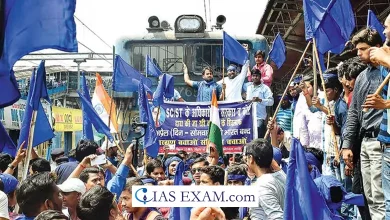UPSC Editorial Analysis
BNCAP and its Significance
[GS Paper 2 – Govt. Policies and Interventions]
Context – The government is planning a new car assessment programme (NCAP) in India, to be called the Bharat NCAP or BNCAP.
About Bharat NCAP?
- Bharat NCAP is a new car safety assessment programme which proposes a mechanism of awarding ‘Star Ratings’ to automobiles based upon their performance in crash tests.
- BNCAP standard is aligned with global benchmarks and it is beyond minimum regulatory requirements. The proposed Bharat NCAP assessment will allocate Star Ratings from 1 to 5 stars.
- The testing of vehicles for this programme will be carried out at testing agencies, with the necessary infrastructure. BNCAP will be rolled out from April 1, 2023.
- It will be applicable on type-approved motor vehicles of category M1 with gross vehicle weight less than 3.5 tonnes, manufactured or imported in the country.
- M1 category motor vehicles are used for the carriage of passengers, comprising eight seats, in addition to the driver’s seat.
Significance of BNCAP
- BNCAP rating will provide consumers an indication of the level of protection offered to occupants by evaluating the vehicle in the areas of:
- Adult occupant protection
- Child occupant protection
- Safety assist technologies
- It will serve as a consumer-centric platform, allowing customers to opt for safer cars based upon their Star-Ratings.
- It will also promote a healthy competition among original equipment manufacturers (OEMs) in India to manufacture safer vehicles.
- It will ensure structural and passenger safety in cars, along with increasing the export-worthiness of Indian automobiles.
- It will prove to be a critical instrument in making our automobile industry Aatmanirbhar.
Need for Crash-Test Vehicles
- Indian vehicles have historically not been crash-tested in the country. Despite being home to only 1% of the world’s vehicles, India shoulders 11% of the global road crash fatality burden.
- India’s Central Motor Vehicle Rules (CMVR) mandate a safety and performance assessment, including a basic conformity crash test by agencies like the ARAI and ICAT when vehicles go in for type approvals. However, this does not involve a crash test rating.
- Many international automakers have been found to sell products in India which score much lower on safety and structural performance parameters. This is done to reduce costs in the price-sensitive Indian market.
- However, safety is moving up the list of key purchase criteria in India as well.
- Global NCAP (GNCAP) crash tests for many best-selling Indian vehicles have dismal ratings, many of them rated zero in a bias.
- The government hopes that by facilitating these tests by in-house agencies, more automakers will voluntarily undergo safety assessments and build vehicles that hold up to global standards.
Comparison with GNCAP
- The government wants the two tests to be in congruence with each other.
- It intends to design the BNCAP to resemble the GNCAP, the global gold standard, as closely as possible, including the speed for crash testing at 64kmph.
- Central Motor Vehicle rules encompass standards with respect to pedestrian protection and seat belt reminders among others and will be retained in the testing under the BNCAP.
- The government hopes the move will increase the export-worthiness of Indian automobiles.





.png)



